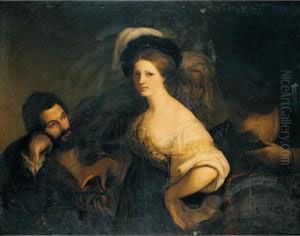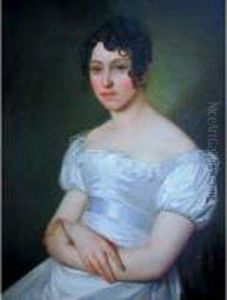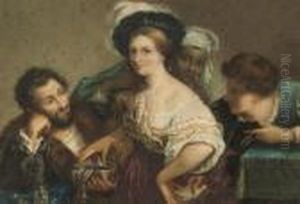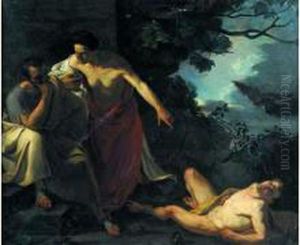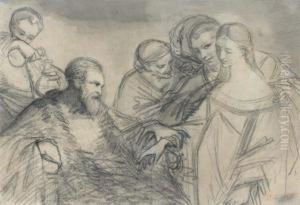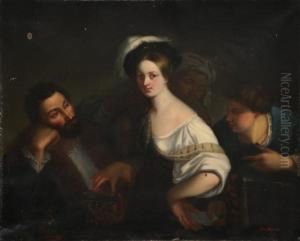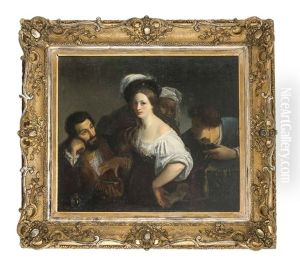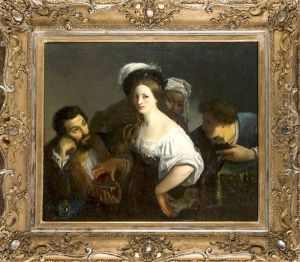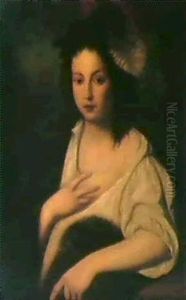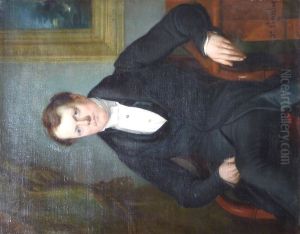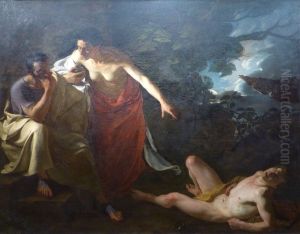Xavier Sigalon Paintings
Xavier Sigalon was a French painter born in Uzès, a small town in the Gard department, on December 19, 1787. During his lifetime, Sigalon was primarily known for his historical paintings and was influenced by the Romantic movement, which was characterized by a deep emphasis on emotion and individualism, as well as a fascination with the past.
Sigalon began his artistic training at a young age, showing a strong interest in drawing and painting. He later moved to Paris to pursue his artistic career and became a student of the famous painter Jacques-Louis David, who was a prominent figure in the Neoclassical movement. Under David's guidance, Sigalon honed his skills and developed a style that combined the clarity and structure of Neoclassicism with the expressive and dramatic elements that would come to define Romanticism.
Despite his talent, Sigalon struggled to gain recognition in the competitive Parisian art scene. He submitted works to the Salon, the official art exhibition of the Académie des Beaux-Arts in Paris, but he was often met with mixed reviews by critics. However, he did achieve some success with his powerful and emotive historical scenes, which often depicted moments of tragedy or intensity.
In 1833, Sigalon was commissioned by the French government to copy the frescoes of the Last Judgment by Michelangelo in the Sistine Chapel, a project that would take him to Rome. The task was monumental, and Sigalon dedicated himself fully to the endeavor. He spent several years in Italy, studying not only Michelangelo's work but also the art of other Italian masters. This period was crucial in Sigalon's artistic development, as it allowed him to immerse himself in the works that had a profound influence on his own style.
Unfortunately, Xavier Sigalon's life was cut short when he died of cholera on August 10, 1837, in Rome. He was only 49 years old. His premature death meant that many of his projects, including the copies of Michelangelo's frescoes, were left unfinished. Despite his untimely demise, Sigalon's work did receive posthumous recognition, and he is remembered for his contributions to the Romantic movement in French painting. His legacy includes not only his own artworks but also his influence on other artists who continued to explore the emotional and dramatic possibilities of art.
